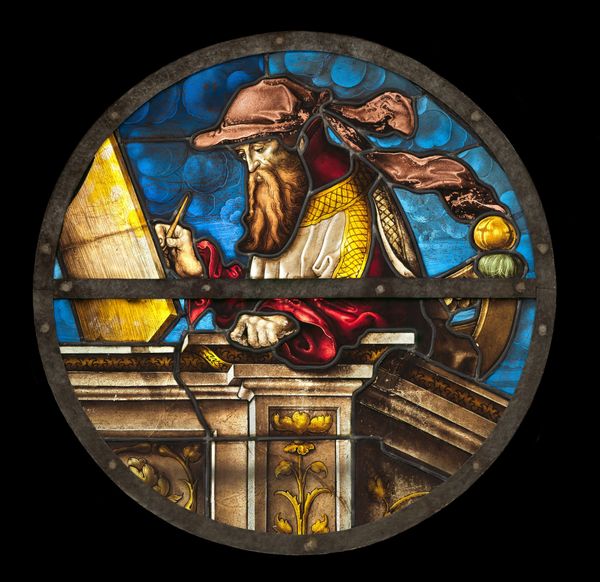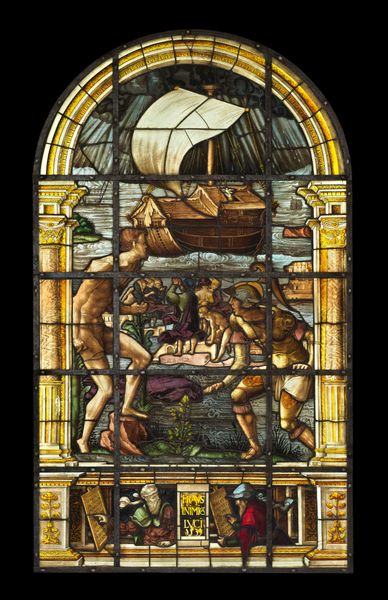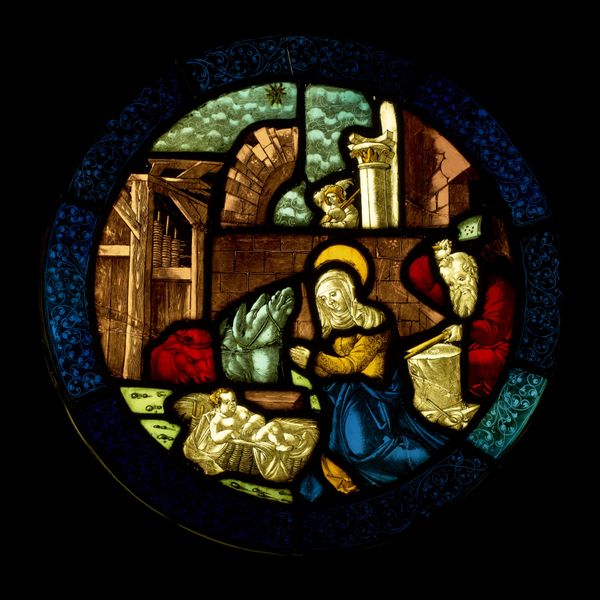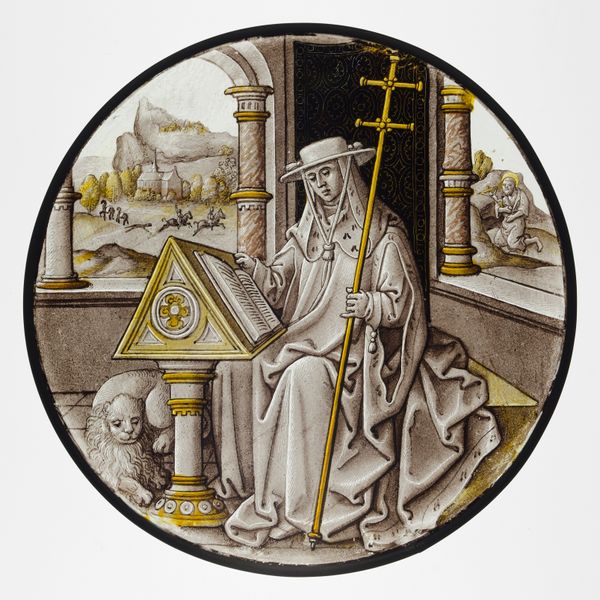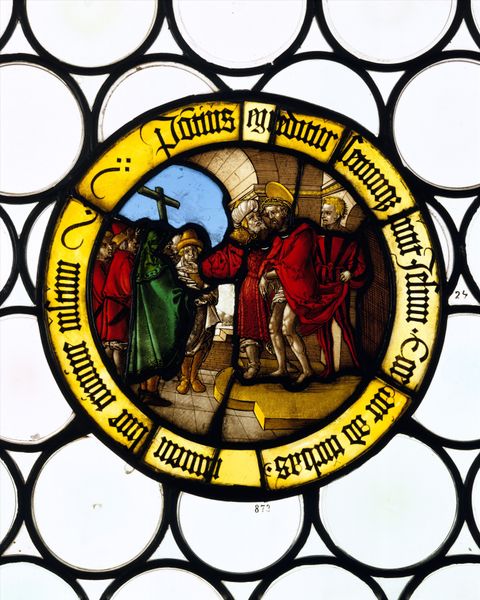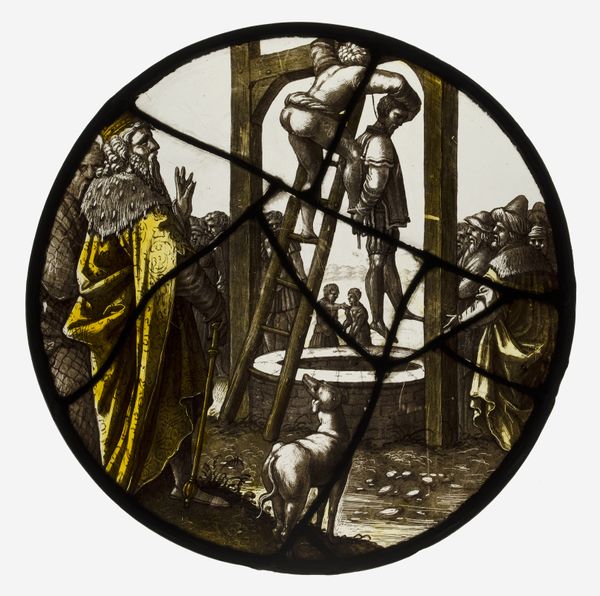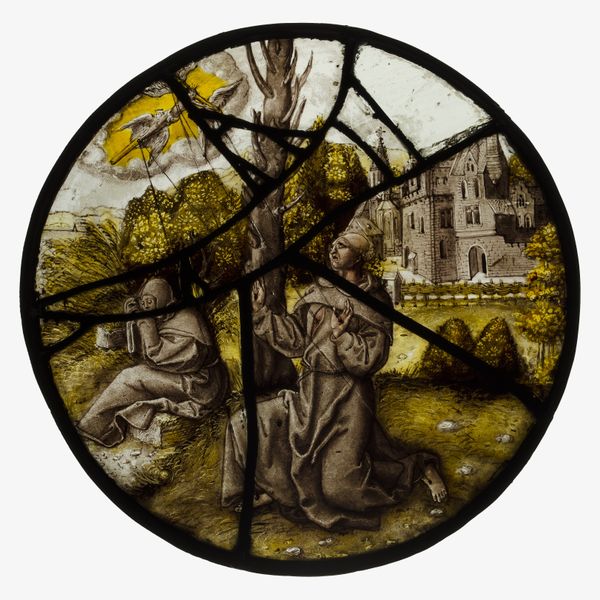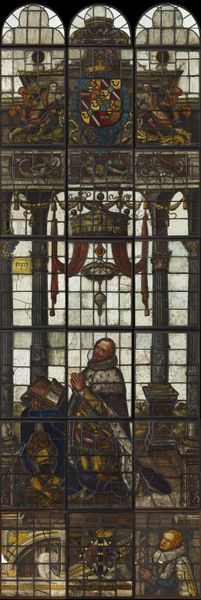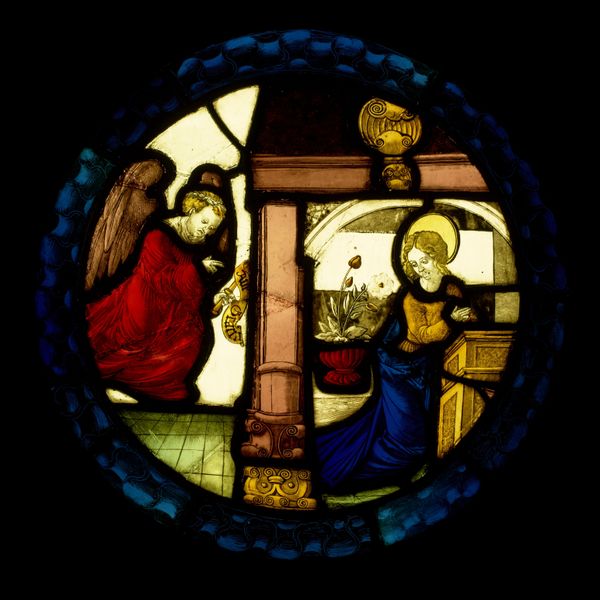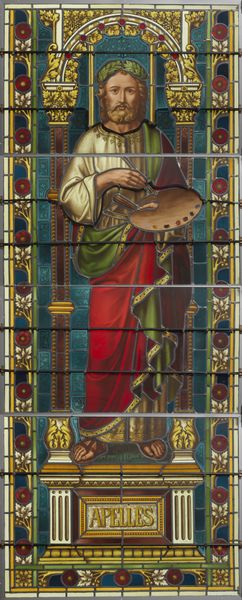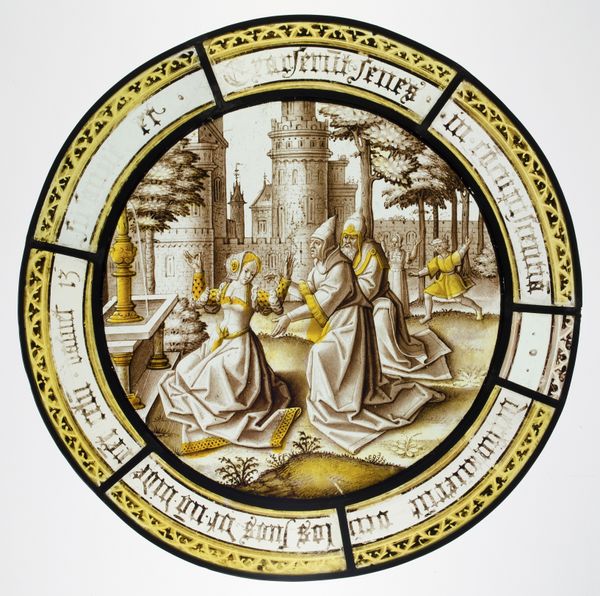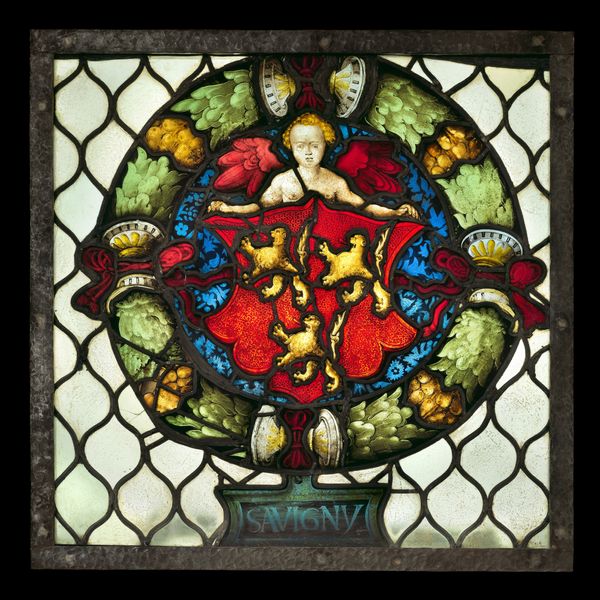
drawing, glass, sculpture
#
portrait
#
drawing
#
medieval
#
stone
#
sculpture
#
glass
#
sculpting
#
sculpture
#
men
#
history-painting
#
northern-renaissance
#
decorative-art
Dimensions: Diameter: 32 in. (81.3 cm)
Copyright: Public Domain
Curator: This striking roundel, made around 1533 by Valentin Bousch, portrays the Prophet Moses. It's crafted with stained glass and silver stain. Editor: It feels immediately contemplative. The depth of blue, juxtaposed against the architectural browns, creates a weighty presence. A man consumed by his mission, his own significance perhaps? Curator: Glass as a medium lends itself to depicting biblical scenes because of its early association with cathedrals, inviting viewers to bask in its narrative. The Renaissance treatment breathes so much life into what was once flat or less refined. It invites light and life into the composition, yes? Editor: Yes, but glass itself, historically, wasn't accessible to everyone. Reflecting on who controlled its production and consumption opens an interesting dialogue. Also, consider Moses as an enslaved figure—what is this portrait, displayed perhaps for a wealthy family, really trying to say about freedom? Curator: I see him not just as an enslaved figure, but as a messenger who’s spent much of his own life in servitude. His intensity suggests an understanding beyond societal constraints, his directness a refusal to bend. The composition pulls my eyes to the hand pointing down. It reads as instruction and directive but feels ambiguous and commanding! Editor: The pointing figure brings an intensity—but what are we really being instructed to consider? A religious text, divine law, societal power structures? Perhaps, Bousch, in this Northern Renaissance take on a biblical figure, wanted the viewer to reconcile faith with human will and the demand for collective freedom. The Renaissance often positioned figures as independent agents; what can one person truly change for the masses? Curator: Ultimately, the way glass bends and catches the light, it can't help but invite multiple perspectives—and as our interpretations mingle, the artwork lives. Editor: Absolutely. And with Bousch’s ‘Moses’, we can also let it ask us how different the power dynamics from Moses’ time truly are from ours now. Food for thought, right?
Comments
No comments
Be the first to comment and join the conversation on the ultimate creative platform.
